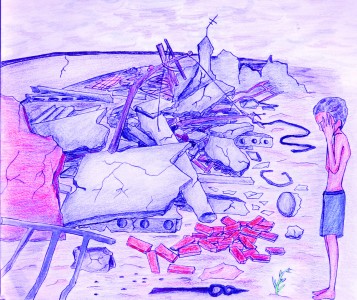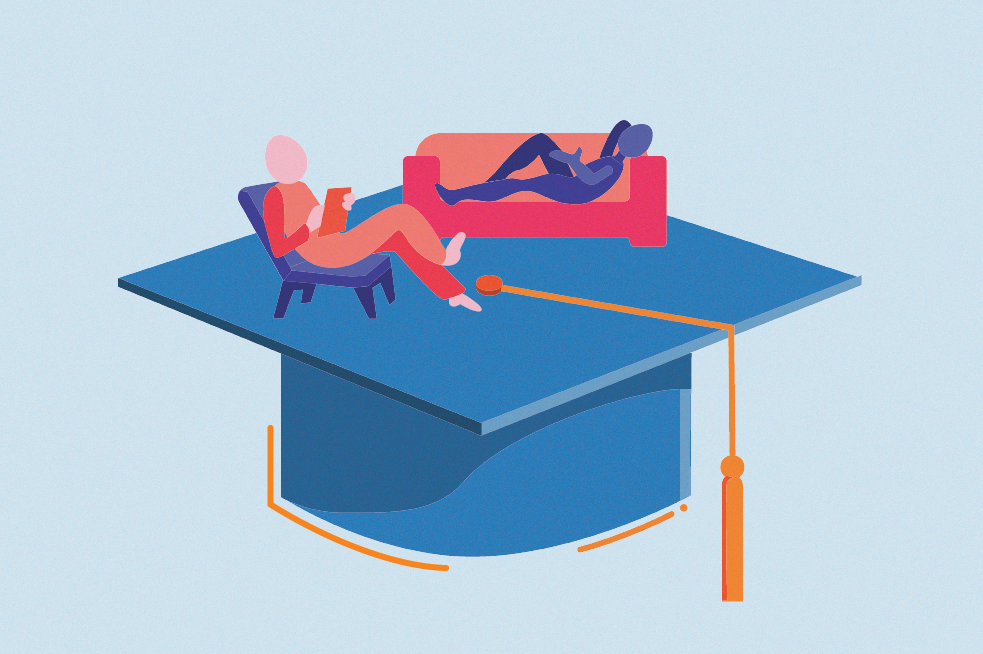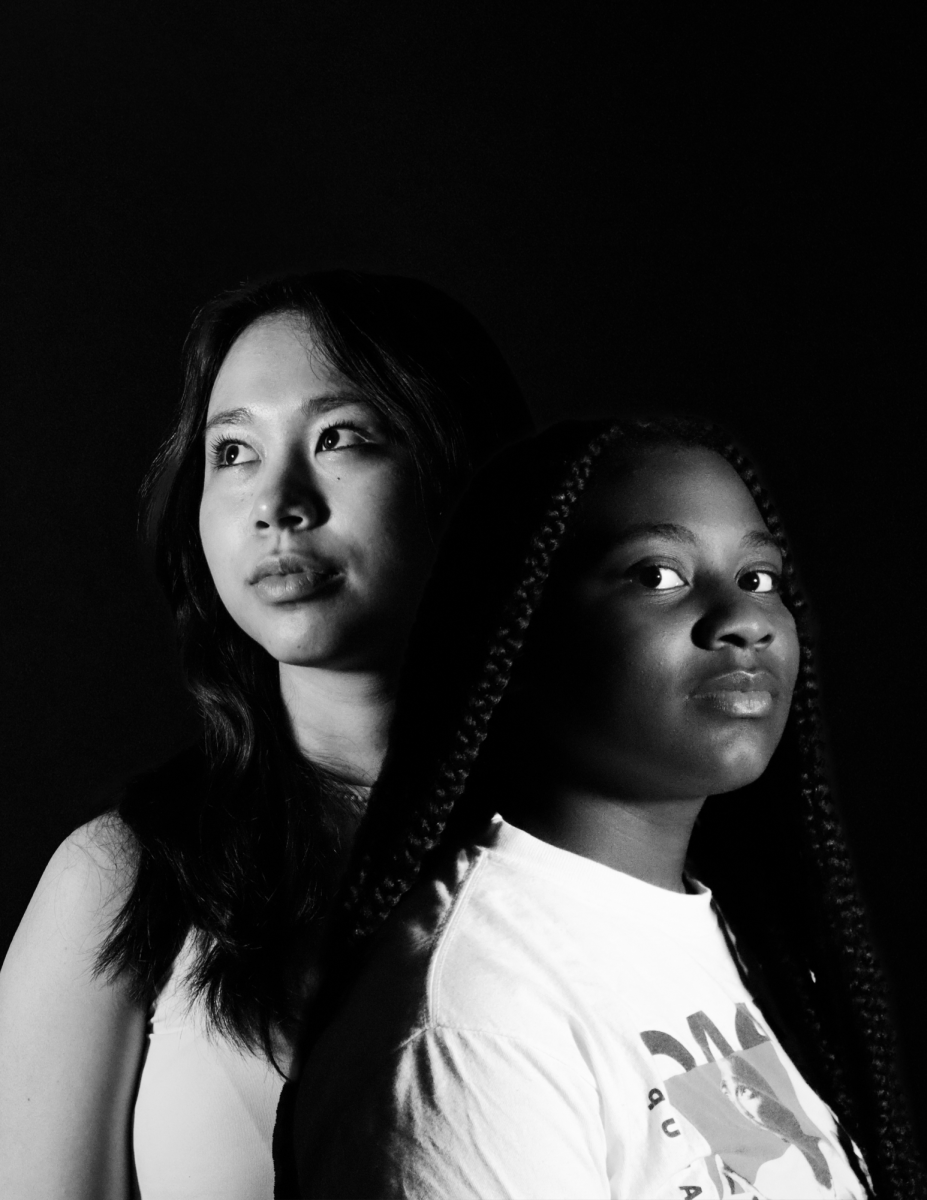
Senior Governance Adviser Carl Anderson was in Haiti when the earthquake struck. He lived in Port-au-Prince since Jan. 2007 and was evacuated to Washington D.C. with his family on Jan. 13.
He was at home in the kitchen when the quake struck, but nobody was hurt.
“I noticed really violent shaking which kept going on and on and damaging the inside of the house. At home there was damage to the exterior yard walls, a crack in the house and all the items in the house are completely smashed. That night after the earthquake I could see fires burning and the constant deafening sound of wailing of people who were hurt, trapped, or mourning the loss of loved ones. The next morning I saw people on top of smashed two-to-three-story buildings trying to dig people out.â€
Anderson saw three homes completely demolished in his neighborhood while two were more or less undamaged.
“There were lots of people walking by with dust on their clothes and hair,†Anderson said. “There were power lines in the middle of the road and at work, all of my files and papers were completely tossed around and ceiling panels were hanging down.â€
The earthquake in Haiti was a magnitude seven. Going up two units of magnitude equates to increasing about 1000 times in energy.
Michael Wysession, Associate Professor in Earth and Planetary Sciences at Washington University, uses seismic waves to map the interior of the earth.
“The earthquake in Haiti happened when two plates slid past each other,†Wysession said. “The contact between the plates is very thin. The magnitude never gets much larger than a seven, but Haiti has had several over the past hundreds of years. The plates move about two centimeters a year. The rest of the plates keep moving and occasionally slip to catch up with the rest. You can think of the Caribbean plate as stationary and the North American plate as sliding.â€
The last large earthquake along this plate was in 1860, and the stress has been building up. There are 20 earthquakes of this size per year.
“The danger here is that the peak happened 14 km from the capital of Haiti,†Wysession said. “The country is politically mismanaged and an economic disaster. They tried to grow agriculture by cutting away the rain forest. It has a weak infrastructure and an unstable government and then you knock all the buildings over. Even before the earthquake, it was the poorest country in the western hemisphere.â€
With regards to the destructive forces of an earthquake, it’s the acceleration that matters. Earthquake hazards are in terms of Gs or fractions of Gs, the acceleration that happens due to earth’s gravitational field.
“Different buildings have different frequencies,†Wysession said. “An earthquake might have the right dominant frequency and it will be very hard to build to withstand earthquakes. There’s much you can do in terms of general construction to minimize damage. An earthquake that would kill 40 people in California will kill 40,000 in Armenia. When you are a poor country, you can’t properly reinforce buildings. The world is coming together and the aid will last for a month or so. I hate to be pessimistic but it’s not going to happen. Haiti just doesn’t have the money. It’s going to take the good graces of the world to restore Port-au-Prince to a city.â€
Anderson also believes that lots of work will be needed to rebuild, reconstruct, reemploy, clothe and feed the citizens of Haiti. To contribute to the cause, he plans on going back to Haiti for a short work visit in the days ahead.
“Stay involved, try to contribute to reputable charities, and don’t forget that the effects of this type of disaster will be felt for years, not days or weeks,†Anderson said. “I just hope [the financial aid] continues and we make new opportunities to work with the people in Haiti to jointly make it a better place in the long run. There are many heroes in this whole event. People came to help their fellow man.â€
Along with the rest of the world, CHS has responded to those in need to Haiti with fundraisers to contribute towards rebuilding the ravaged country.
Learning Center History Teacher Janet Curry sponsors Amnesty International, a worldwide organization with thousands of chapters in schools and universities. Allison Goldfarb, Ali Meyer, Emily Holtzman are some of the activists this year who had an idea for helping Haiti.
“Amnesty International’s goal is to widen awareness and contribute actions that support human rights for all people as prescribed in the Universal Declaration of Human Rights 1948, a U.N. document signed by member nations,†Curry said.
Curry has read many books that influenced her opinion on the events and the aftermath. Naomi Klein’s “Shock Doctrine†was particularly insightful.
“Among the things capitalist forces ‘capitalize’ upon have been natural disasters, in order to remake afflicted societies in a pro-Western image,†Curry said. “The earthquake was a particularly heart-breaking tragedy, but all the worse for the political-economic and environmental exploitation before, and likely after, the geologic event.â€
Curry is heartened that the entire world has come together in order to support Haiti.
“It has been noted by a great feminist that among all the human emotions, the most radical is empathy, and in its authentic shape it involves learning enough about others to be able to begin to see things from their perspective,†Curry said. “Anthropologists have long known that we do this work, experience the comparative moment, we grow, the world becomes larger and more interesting, and -here’s the Amnesty part- we are moved to helpful action. Every bit matters, but those of us from the comfortable West owe so much more.â€
The Amnesty International club has raised $1,016 and is concentrating efforts on a multi-school benefit concert in April.
“It will be a great event, packed with student band talent, consciousness raising, and action options, all toward the prevention of genocide, including the Darfur conflict,†Curry said. “We need to fight against the omnipresent pressures to forget Haiti as other headlines and quicker gratifications eclipse the need.â€
Sophomore Margaret Mulligan created a blog after the crisis in Haiti.
“I had been thinking about creating a blog to raise awareness about problems in the world like poverty, genocide and natural disasters,†Mulligan said. “I figured that we all spend enough time checking our emails or going on Facebook and that creating a blog would be a convenient thing for people to access.â€
All of her posts are different. Some are long and carry many messages while others are short and give ideas for ways that teens can help right now, whether it’s watching something about Haiti on the TV or buying an album on iTunes where the profits go to help Haiti.
“The posts usually take two to three hours of research and writing time which may seem ridiculous, but with all of the information in the media, deciding what to use can be difficult,†Mulligan said.
In collaboration with the Community Service Club, Mulligan created ‘Hearts for Haiti,’ a Valentine’s Day-themed fundraiser that went from Feb. 8-12. The fundraiser sold $2 chocolates attached to a heart with the message “Love is Worldwide†with other donations welcome.
“Working through community service club was amazing,†Mulligan said. “With the help of president Jen Golden and sponsor Sarah Falkoff, I was able to promote my project even more and help Clayton High School spread the love. I was inspired by the feedback I got from my blog. All of my friends and family members were reading it and even some people I didn’t know were asking for the link. I thought of Valentines Day and how incorporating the holiday would give the fundraiser a theme that instantly inspired me with the name ‘Hearts 4 Haiti.’â€
Mulligan is very grateful for all the support she has gotten and the number of responses as well. The $467 raised by ‘Hearts 4 Haiti’ event went to The Red Cross.
“My friends and volunteers from community service were absolutely amazing at lunch,†Mulligan said. “They all helped to sell the Valentines and promote the cause and I thank them all so much for that.†⎫






